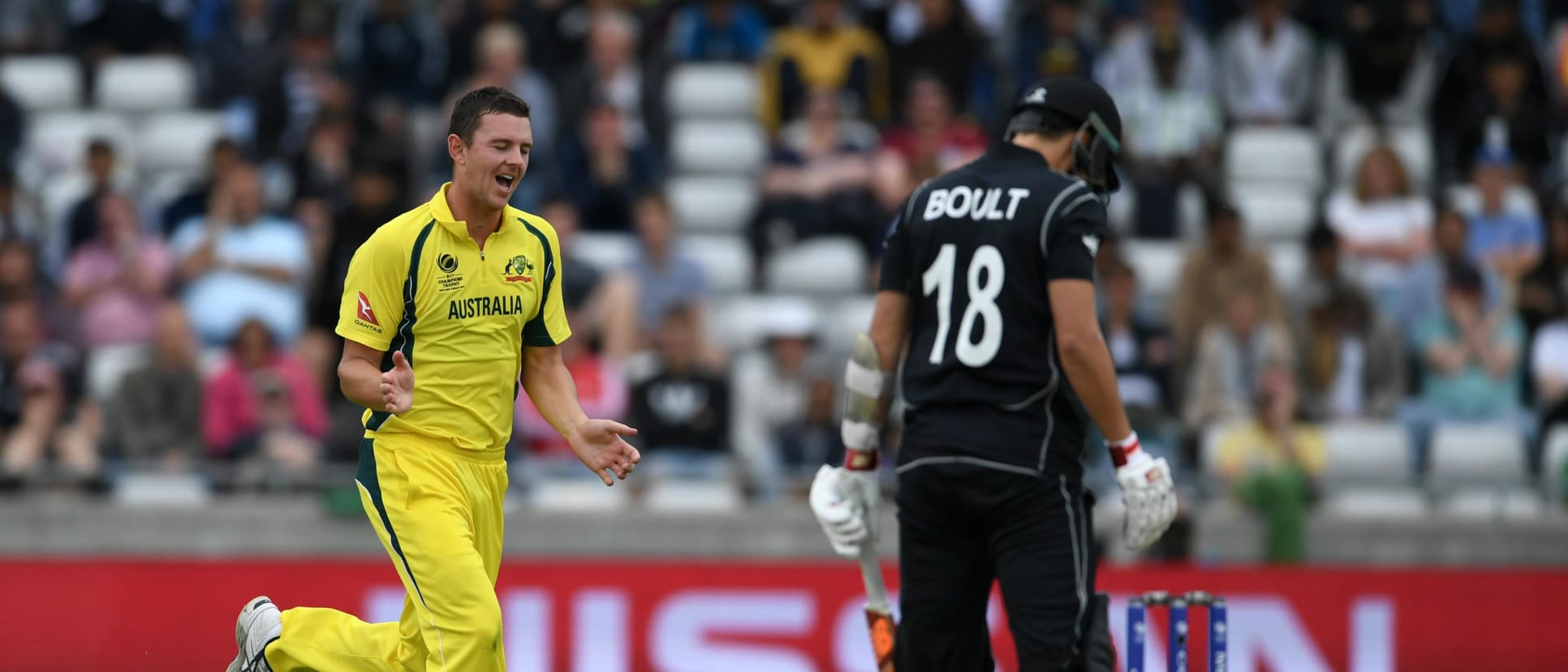Australia, New Zealand forced to split points

One of the features of Kane Williamson’s New Zealand side during their run to the semi finals of the ICC World T20 2016 was how they almost always seemed to have out-thought the opposition, often defying conventional wisdom.
On Friday, New Zealand pulled another rabbit out of the hat when Williamson opted to bat on winning the toss against Australia in the second match of the ICC Champions Trophy 2017. The decision flew smack in the face of received knowledge. In the T20 era, chasing was becoming increasingly easier. There was the strong possibility of rain, which made chasing an even more tempting proposition. But either Williamson has a weather forecaster that the world needs to know of, or he backed his gut and his reading of what would happen and took a call.
In the end, it was all for nothing with rain ruining a delicately poised contest, Australia on 53 for 3 in nine overs, having been set a revised DLS target of 235 in 33. At the nine-over mark, it was well behind (the par score for three wickets down was 78) but that of course didn’t matter because 20 overs were needed to constitute a match.
New Zealand had started strongly with the bat courtesy Williamson’s 100 off 97 but finished with a whimper , thanks to Josh Hazlewood’s career-best 6 for 52 in nine overs, to end on 291 all out in 45 overs in a match already reduced to 46 overs a side.
More rain at the innings break meant Australia’s target was revised again, 235 in 33 eminently gettable on a surface that had not played any tricks in the first half. But New Zealand’s bowlers came out fired up, the trio of Tim Southee, Trent Boult and Adam Milne working up good pace and movement to prise out David Warner, Aaron Finch and Moises Henriques.
With Steve Smith, who turned 28 on the day, still around and the likes of Glenn Maxwell and Travis Head to come, the match was ripe for a grandstand finish. But the weather gods decided that neither team deserved to go empty-handed from a match that had swung one way and another throughout.
At the start, Williamson gave his best impression of a thief in the night – not because he has anything even remotely sneaky about him – but because he got his runs in seemingly stealth mode. As is his wont, he had put together a monumental score by the time you caught on to the fact that he was batting well.
Williamson’s ninth ODI century was the centrepiece of New Zealand’s innings. It ought to have scored a lot more, but Australia’s star-studded bowling attack induced a late collapse to claw its way back into the match. Foremost among them was Hazlewood. His first two overs went for 20 runs, but he adjusted quickly. The next two overs in his first spell yielded only nine runs and netted the wicket of a fluent Martin Guptill, who had taken on the attacker’s role at the start. Later on, Hazlewood would take 5 for 15 in a devastating three overs at the death.
Luke Ronchi rode his luck, and made dollops of it on his own too, against the country he had formerly represented. Sent in at the top of the order, Ronchi provided the thrust that New Zealand has often lacked since Brendon McCullum retired, using power, timing and good fortune to equal effect.
Ronchi laid the foundation with a belligerent 65 off 43, and Williamson built on it with equal parts control and flamboyance. But the finishing kick was lacking, New Zealand going from 254 for 3 in 39 overs to losing seven wickets for 37 runs in six overs.
Ronchi was lucky to survive a run-out opportunity when on 24 off 16, caught napping when Williamson called him through for a very gettable single after the ball had been hit to mid-on off the last ball of the ninth over. Williamson was more than halfway down the track when Ronchi belated decided to cross over to sacrifice his wicket. However, Matthew Wade didn’t come up to the stumps to collect the throw and eventually had to half-dive, half-slide, but couldn’t break the stumps. Instead of being 65 for 2, New Zealand was 66 for 1.
Three balls later, the rain came down. As it was, Ronchi’s luck hadn’t yet run out. On resumption, he continued to attack. He either stepped away to give himself room to free his arms, or put a lot of punch behind his shots. The batting-friendly surface gave Ronchi space to hit through the line, but when he was on 54, he mis-hit Pat Cummins straight to Mitchell Starc at mid-on, only for the field to spill the chance. Ronchi rubbed salt into Cummins’s wounds with a bludgeoned four and a straight six following the drop, but to Australia’s relief, he went in the next over, smashing John Hastings straight to point to give Maxwell the second of four catches.
Ross Taylor made runs and shared a 99-run stand with Williamson, but didn't look in the best touch. He was caught off Hastings, but the body blow was Williamson’s run-out off the first ball of the 40th over, when he took on Cummins’s arm for a risky single. The innings just fell away after that, with Hazlewood reaping the rewards of keeping it tight to induce rash shots that unerringly found fielders, even when well hit.
It was all leading towards a possibly exciting finish, but in the end both teams had to be satisfied with one point each.
Australia next faces Bangladesh at The Oval on Monday 5 June while New Zealand travels to Cardiff for a clash against the hosts on Tuesday.